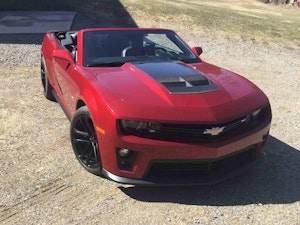Media | Articles
Why Cragar S/S wheels are timeless
You asked, and asked, and asked for it. In our recent post highlighting 11 of the best wheel designs, the comments were rife with complaints that we’d neglected to properly recognize the Cragar S/S. While we understand the Torq Thrust, Rally II, Magnum 500, and Keystone guys also spoke up in protest, you didn’t bring enough torches and pitchforks, the squeakiest comment gets the wheel, and Team Cragar made the most noise in the forum. (Plus, in a previous edition of this list, we recognized several of these fan favorites.)
The Cragar S/S design is as old as the muscle car itself. In a stroke of impeccable timing, the S/S came out in 1964, the same year the GTO came roaring on the scene. It quickly became a hit amongst customizers due to its superior strength and good looks. Cragars are still among the most popular and affordable aftermarket wheel designs 55 years later. It’s truly a design that looks good on just about any car.
Roy Richter purchased Cragar Industries in 1955 hoping to appeal to hot rodders who wanted the ease of a plug-and-play design that could work for both performance and style. The wheel’s five spokes are designed for strength, with the main the attachment point for each spoke connecting to the center hub. This formula for high-speed stability was ideal for drag racers.

The simplicity of the five-spoke style is pure genius. It’s striking, but not so flashy that it clashes with or undermines a car’s design. Unlike a set of Pontiac snowflakes or C4 Corvette sawblades, the look doesn’t date itself—the Cragar S/S looks as sweet now as it did in the ‘60s, whether it’s on a 1964 Impala SS or a Fox-body Mustang.
Marketplace
Buy and sell classics with confidence
Next, consider the fact that a set can be easily purchased for well under $100 per wheel, and it’s an obvious choice for most enthusiasts. Sure, there are options out there that make more of an individuality statement, but a set of Cragars is always in good taste.
Just like a Hurst shifter or a Holley carburetor, a set of Cragars is a staple of affordable hot rodding. They’ve been often imitated but never truly duplicated, and that’s a reputation in muscle and hot rod culture that is well earned.











